VALLE DE GUADALUPE, Mexico — My best vacations are the ones that remind me the world is bigger than bingeing Jon Hamm shows, nonstop Slacking, and my Apple Watch reminding me it’s “time to move.” In other words, I really need to log off my phone and — as my therapist would say — “get out of my head and into my body.” I find that tacos and wine help, too.
A trip to Valle de Guadalupe, a.k.a. Mexico’s wine country, with two other travel journalists checked the boxes and invented new ones. From the moment we landed in San Diego from New York City and felt the SoCal breeze through the revolving doors at baggage claim, the rut was dissolving. A 90-minute-ish drive into the Baja Peninsula later, the clouds lifted — figuratively and mostly literally — over the next four days.
Crossing Over
Crossing the border from the US into Mexico is easy and quick and drama-free (unlike the reverse; more on that later). After traversing bustling, bumper-to-bumper Tijuana, we were on cinematically gorgeous and uncrowded drive along the Pacific, a peaceful trip that was interrupted by the giant, double-layer, Trump-beloved border wall. If you’ve never seen the wall in person, know that its juxtaposition against the crystal blue horizon is unsettling.
Almost as unsettling: On our drive down, we passed Castillo del Diablo, or Devil’s Castle – a California-based millionaire’s giant home with a humongous rooftop statue of Satan surrounded by gargoyles (naturally?). Here’s proof that some roadside attractions are best viewed from the road – though I really do love anything that would make my mom say “it takes all kinds,” and this certainly qualifies.
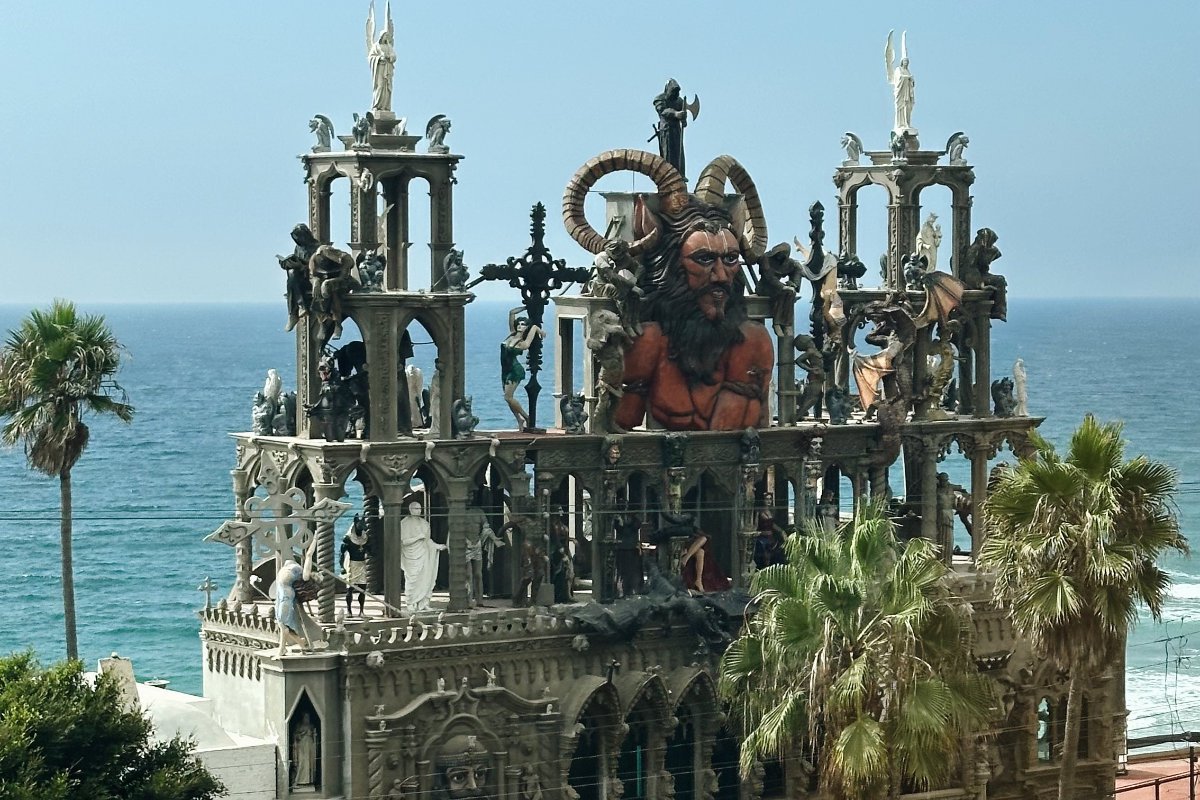
We stopped for lunch in Ensenada at Primitivo, an al fresco spot where chef Carolina Jiménez and her staff cook everything over an open flame and serve it under a majestic 300-year-old oak tree, straight out of Avatar. We had oysters with ponzu sauce, octopus tacos, and roasted ribs — and soaked it all up with fresh bread. (Not much in the way of veggies, but this is vacation, baby.) The food was excellent, though the tree alone is reason to go.
Now sufficiently as overstuffed as one should be after a first holiday meal, we continued inland into Valle (most people drop the “de Guadalupe”), and the terrain began to remind me more and more of Tuscany — brownish/green rolling hills and vineyards dotting the landscape. And for the record, next time I go to Tuscany, I will say it reminds me of Mexico.
Jutting out from dirt roads are stunning examples of boxy, giant-windowed, brutalist architecture. One of which was our destination, the newly just opened, Banyan Tree Veya. We’d made it, in more ways than one.
Blending In and Standing Out
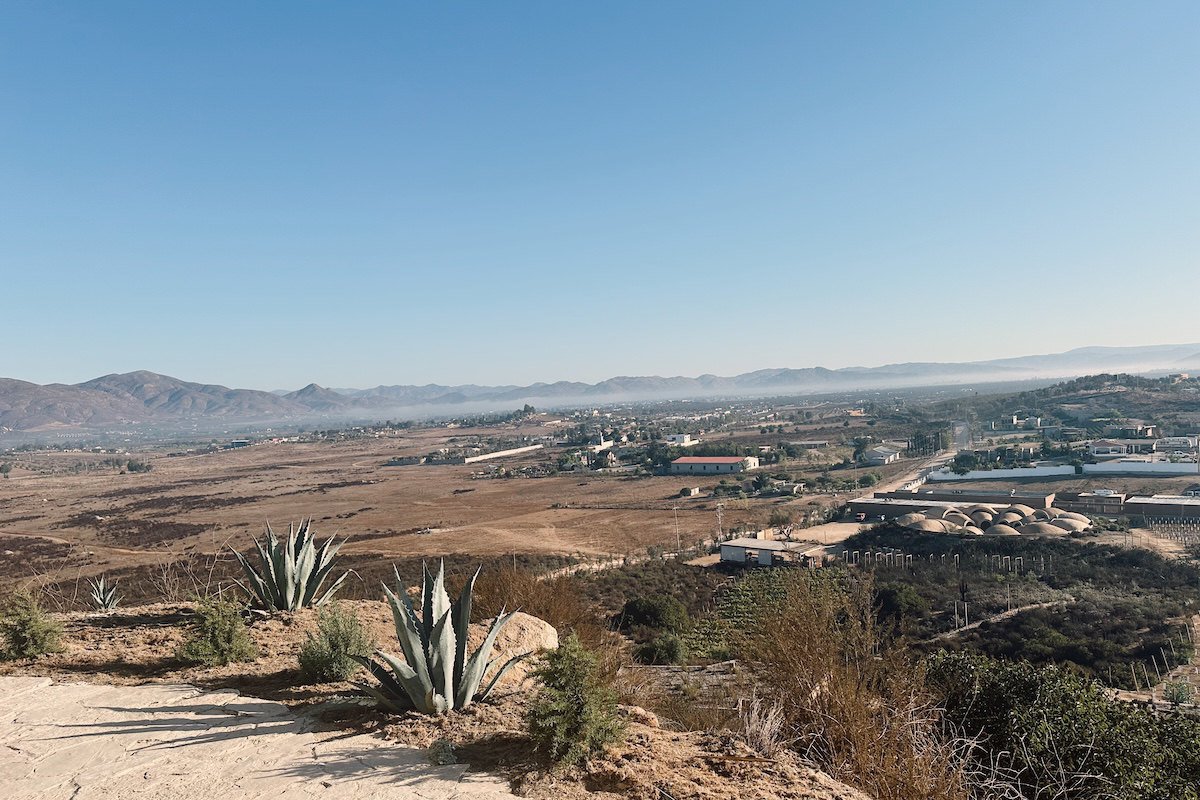
The resort, which opened late last year, is a 30-villa complex atop a large hill, perfectly situated for views of the surrounding vineyards. Every time the sun moves, you’ll want to get out the camera again (just don’t check your work email when you do). Banyan Tree Veya is luxe but not flashy, its neutral colorways blending into the landscape. It feels more like they added to paradise rather than paved over it.
Compounding this effect: There are no cars on the grounds, so the primary modes of transport are golf carts and walking along dirt and stone paths. I preferred the latter and was rewarded with little rabbits and lizards on every stroll, plus sore-in-a-satisfying-way calf muscles, courtesy of the occasionally steep terrain.
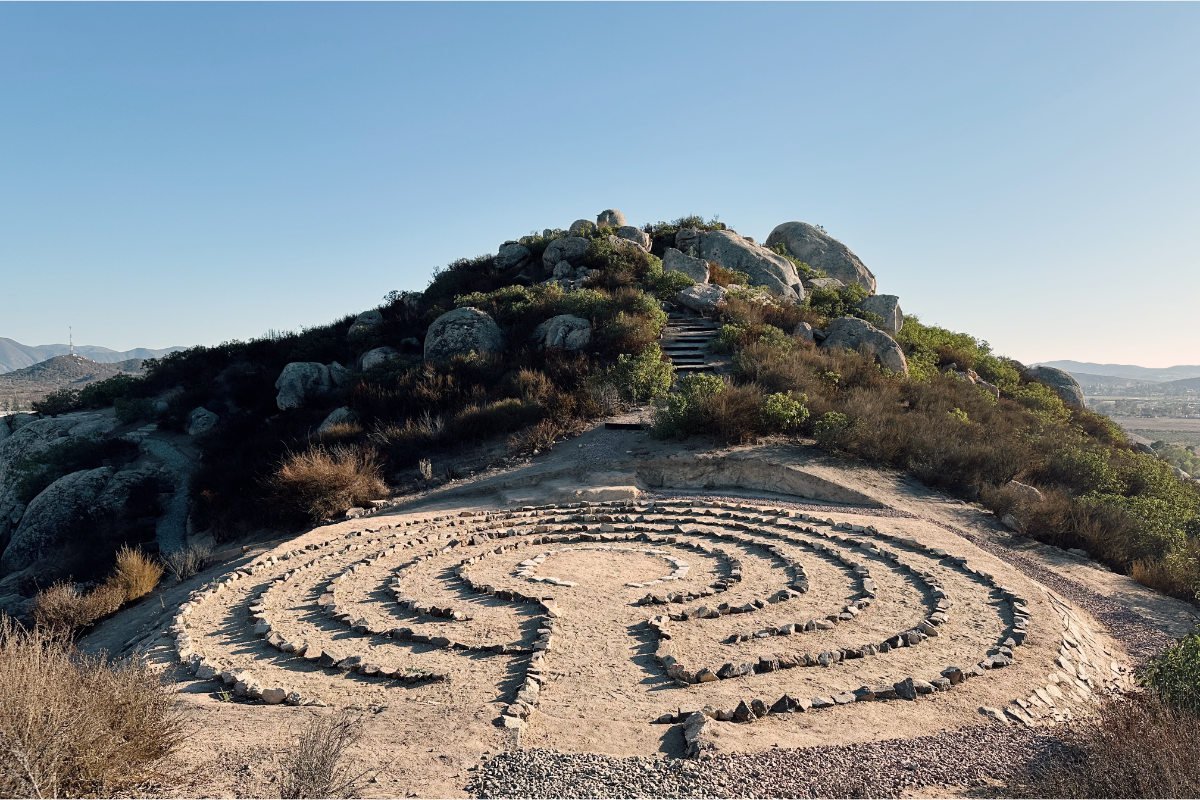
Despite being part of the larger Banyan Tree chain, Veya has a boutique feel. It’s quiet, peaceful, and you see the same staff members every day, who are as attentive (or not) as you want them to be. Every tiny detail feels deliberate. My friends and I found ourselves asking about paint colors only to be told they were custom. (I shoulda known.)
But don’t worry: It’s still got the large scale amenities we like to see — a few (really great) restaurants on the property that pay homage to the region, a gym, two infinity pools (one of which is next to a little 1950s Airstream trailer that dishes out tacos and margaritas all day), and a dreamy spa.
Sleeping (No, Really Sleeping)
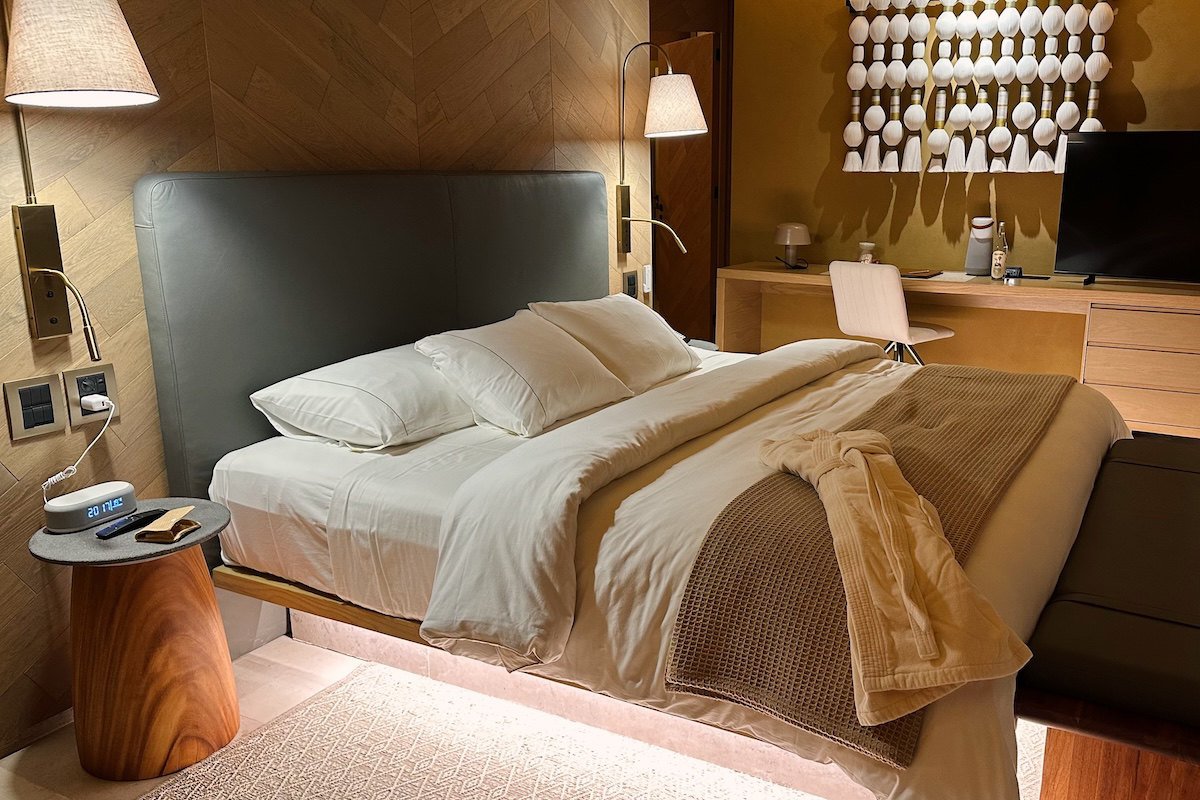
Veya markets itself as the wellness arm of the Banyan Tree family, and they made sure to get the sleeping part right. Before I arrived, they requested my sheet and pillow preferences. It was my first time on satin (thanks for that, Veya) and I was given a remarkable ten (ten!) pillow types to choose from, from a knee pillow to a back support pillow to a pregnancy pillow to a varicose veins pillow. I feel like I’m Bubba talking about shrimp, but it’s pillows, and I want them all.
Helping with the sleep situation: Every room has a private “plunge pool” (their words), but we might as well call it a hot tub. At the end of each day, I submerged, and my nervous system immediately peaced out. After that, I didn’t even need to listen to a monotone podcast to drift off. With the curtains closed, it was completely dark, and I actually slept, drumroll, a whole night.
Sweating It All Out
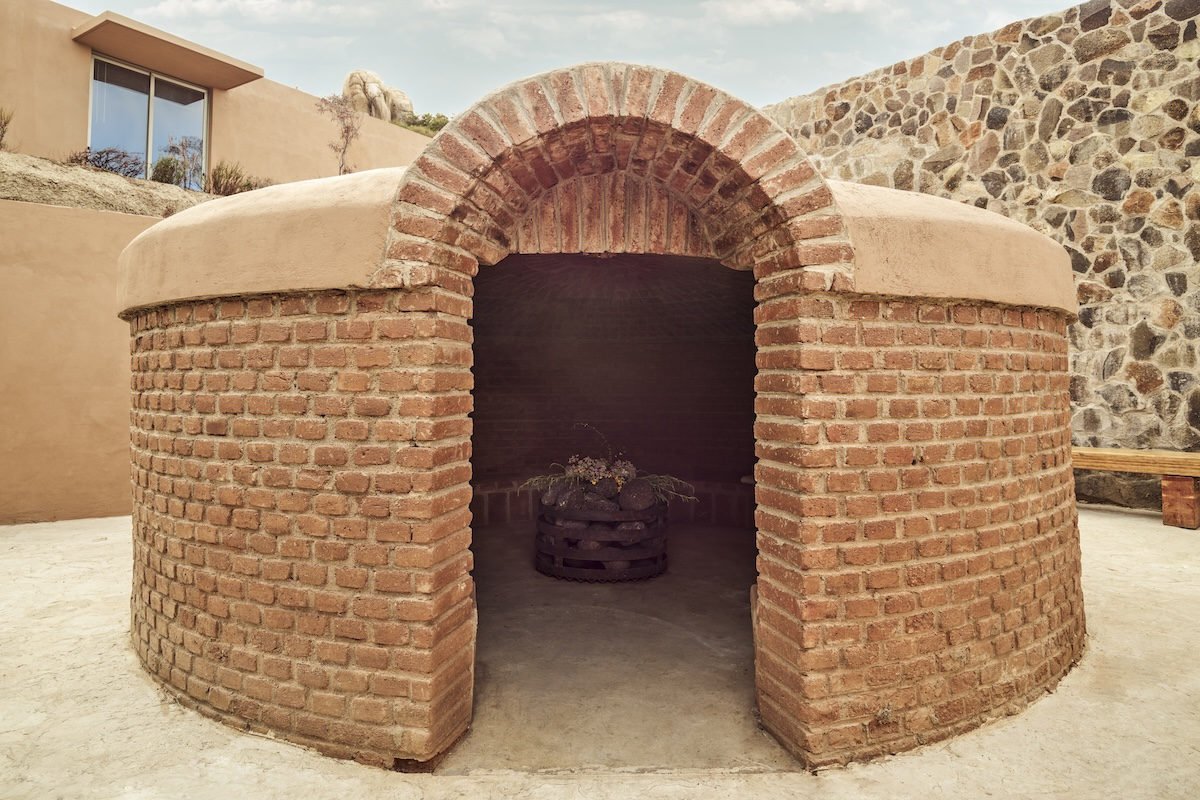
The hotel has a temazcal ceremonial sweat lodge on the property, and local shamans lead guests through the ritual. (If you’re ever at a place that says you can do this by yourself or without an experienced guide who’s been doing it for years, run.) The structure is an enclosed, domed room with a bench around the interior perimeter and a huge vat in the middle that gets filled with rocks. We were told to wear clothes we could sweat in, and that was sound advice.
Our guide opened the ~40-minute ceremony with a brief history: Temazcals, a sacred ritual across Mesoamerica for centuries, symbolize rebirth and serve as a bridge to our ancestors. Beyond the spiritual significance, temazcals are supposed to help detox the body, boost circulation, and leave skin glowing. (I can vouch for that last part — my skin looked better for the next week than it maybe ever has.)
Outside the building, lava rocks were heated in a fire, and once the ceremony began, new rocks were brought into the temazcal every ten minutes or so. When the shaman poured water on them and closed the thick curtain over the doorway, a new wave of nearly unbearable heat enveloped us. The rocks called abuelas (or “grandmothers”) symbolize our maternal ancestors. We were guided to thank the abuelas every time new ones were introduced.
The heat was very intense — way more than any of the bougie saunas I frequent in Brooklyn. It was so intense, in fact, that I ran out at one point. (I’m a weakling; my three friends remained.) As I sat outside, listening to the ceremonial chants and “gracias, abuelas” within, I did think of my own grandmother, who was my favorite person. As I thought about her, I mustered the courage to go back in and stay until the end. When we emerged, we were drenched, speechless, transformed, and full of gratitude toward our shaman for sharing the ritual with us.
Cheers to That
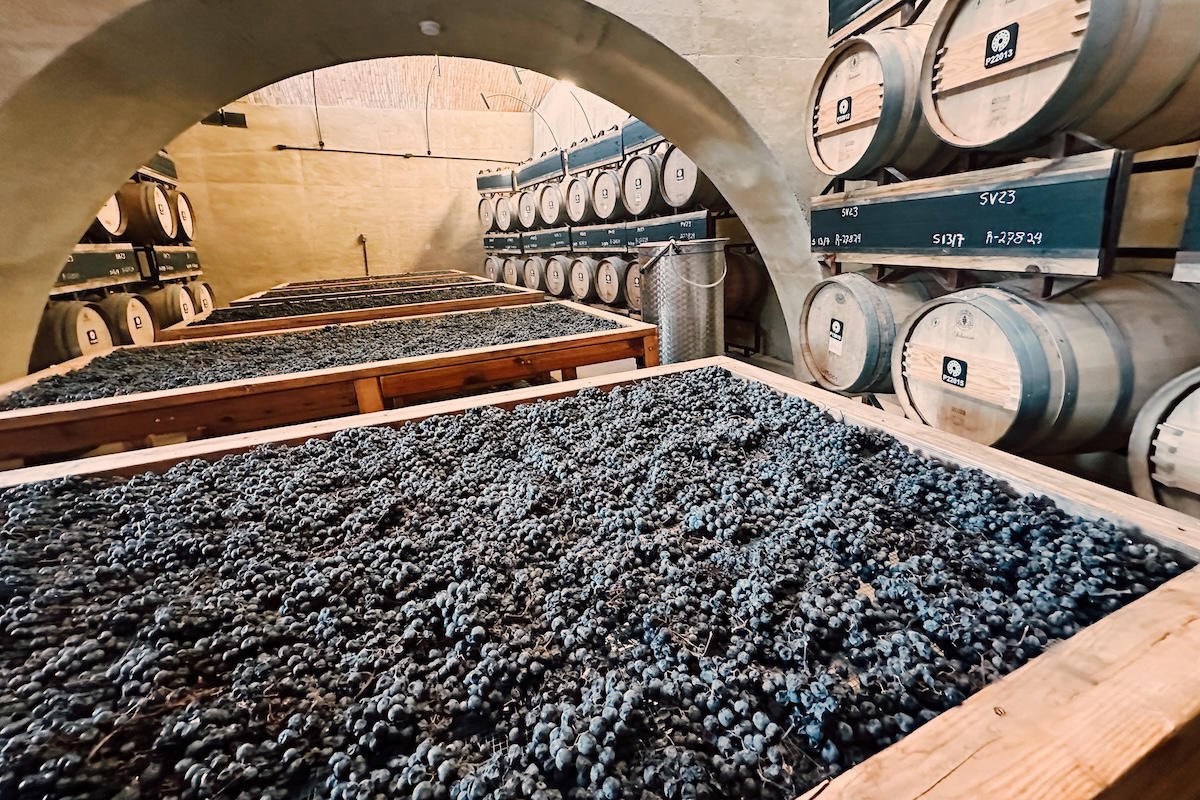
Approximately 70 percent of Mexico’s wine is produced from grapes grown in Valle de Guadalupe. It’s said that the Spanish missionaries started planting vines there in the 1600s for sacramental reasons, though Mexican wines didn’t really take off until my favorite decade: the 1990s.
Pictograma, Banyan Tree Veya’s on-site vineyard and winery, exclusively produces delicious grenache. The barrels are housed in a large, sculptural concrete building at the base of the resort that looks straight out of Dune and practically begs to be Instagrammed (if you aren’t trying to avoid the internet, which you should be). It’s also front and center on their website.
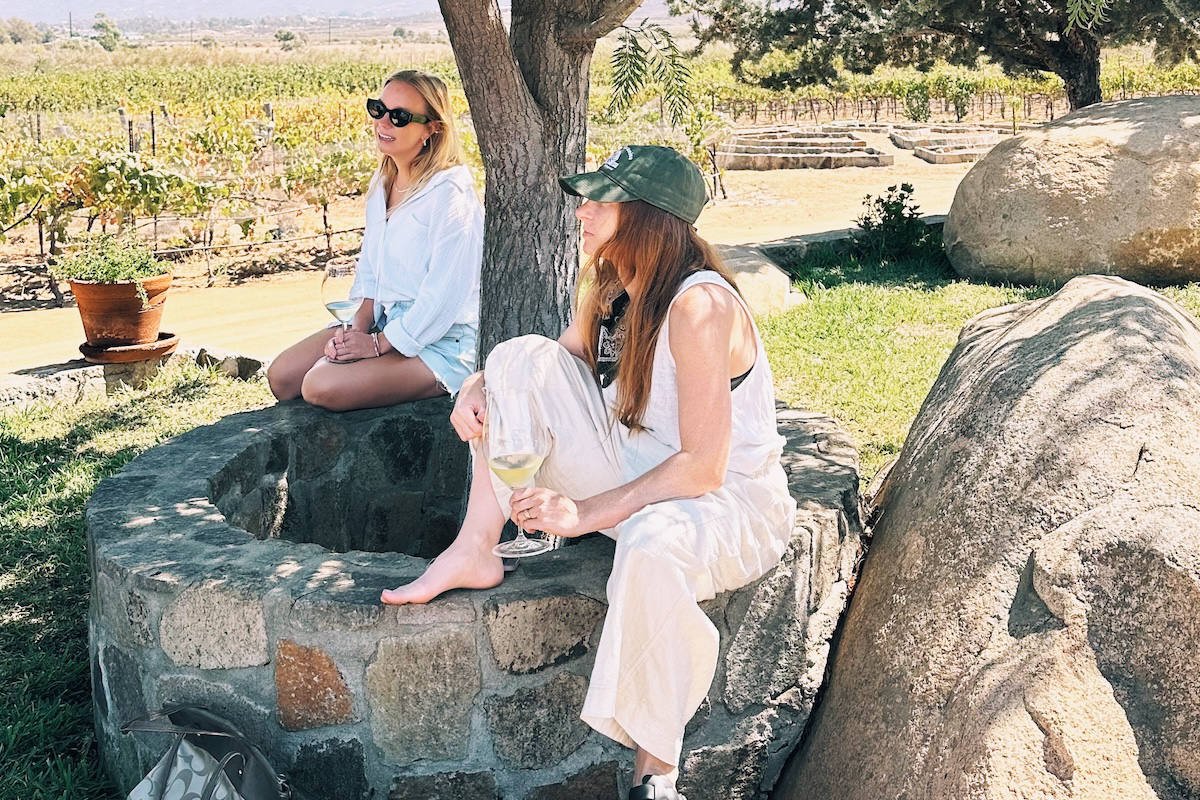
I really enjoyed day tripping to surrounding vineyards, of which there are many, from small family hobbyists to large-scale commercial operations. We were ushered around by the delightful husband-wife team behind the local tour company Lost in Baja. Abigail grew up in Valle and transformed her childhood home into a small vineyard, fulfilling the longtime dream of her late grandparents. We were invited into the house, now fully converted into barrel storage, where we tried wine straight from the barrel from the year(s) of our choosing. We reminisced in the process, sipping wine from the years we were born.
They also took us to the nearby biodynamic vineyard Viñas del Sol. I had heard stories about biodynamic practices — how vines are planted according to phases of the moon — but I’d never seen or tasted it firsthand. One biodynamic tradition involves taking the bladder of a stag, putting yarrow (a flowering plant) inside it, letting it hang in the summer sun, burying it in the winter, and unearthing and discarding it in the spring. Unfortunately, I didn’t get a photo of the little bladder hanging from the tree (which, honestly, just looked like a shriveled mushroom), but I will say this: Whatever they’re doing is working. The wine was awesome.
Leaving Paradise
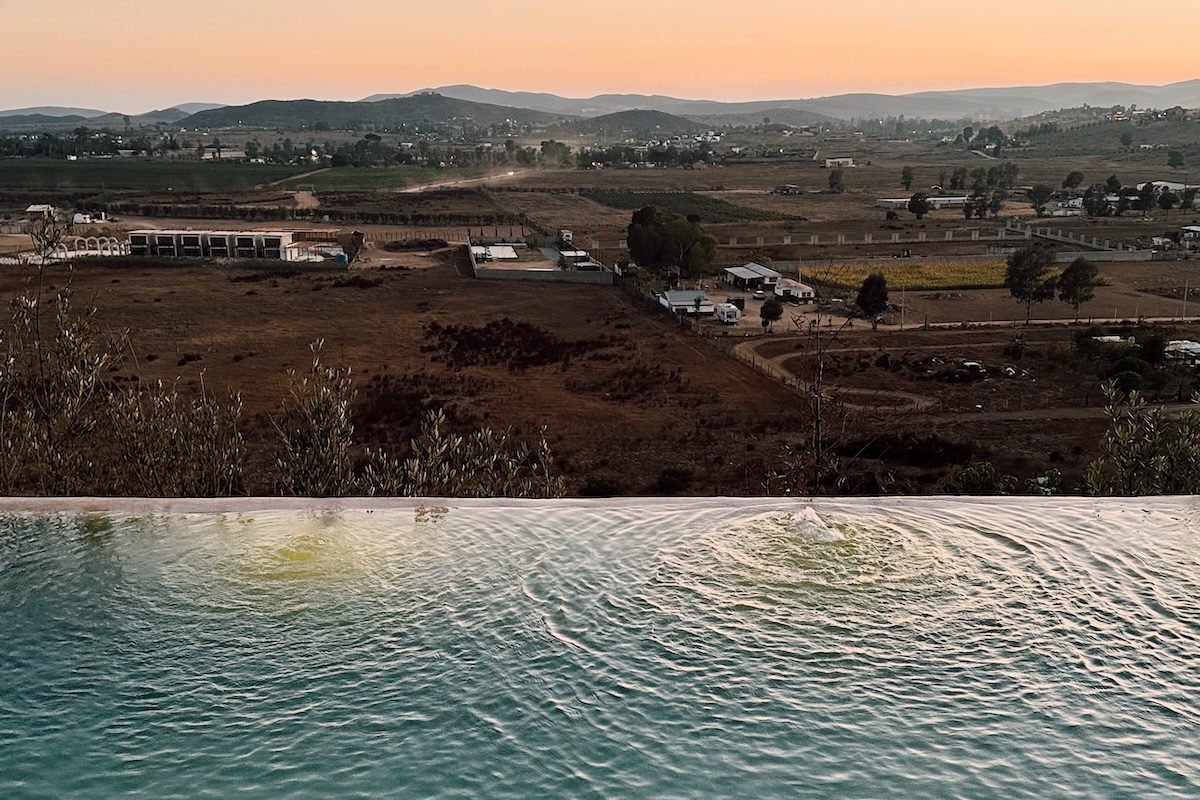
The drive home from a good vacation is never as pretty as the drive there, even on the sunniest days. And leaving Valle — beautiful land of wine and plunge pools and special pillows and tacos (so. many. quesabirrias. tacos.) — was a challenge.
Adding to the struggle: The border crossing to get back into the U.S. from Mexico was more of a rigamarole than going into Mexico. I’d heard from San Diegan friends that it can take 5-6 hours, and that it’d be jam-packed with people selling water, food, and knick-knacks — a hassle/spectacle actually pre-dates the Trump administration and seems to be just par for the border.
Maybe because our hotel shuttle had a special Fast Pass, and maybe because it was a Thursday morning, leaving took us only 20 minutes more than entering. (The driver told us sometimes even with the pass it can take 45 minutes to an hour.) But if you’re driving yourself, which would be fun in an old Aerosmith video kind of way, plan accordingly. Alternatively, to skip the border, you can fly into Tijuana.
Either way, rest assured, it’s worth it.
This wasn’t our first time in Valle de Guadalupe. Read more: Hold the Tequila! In Valle de Guadalupe, It’s All About the Vino



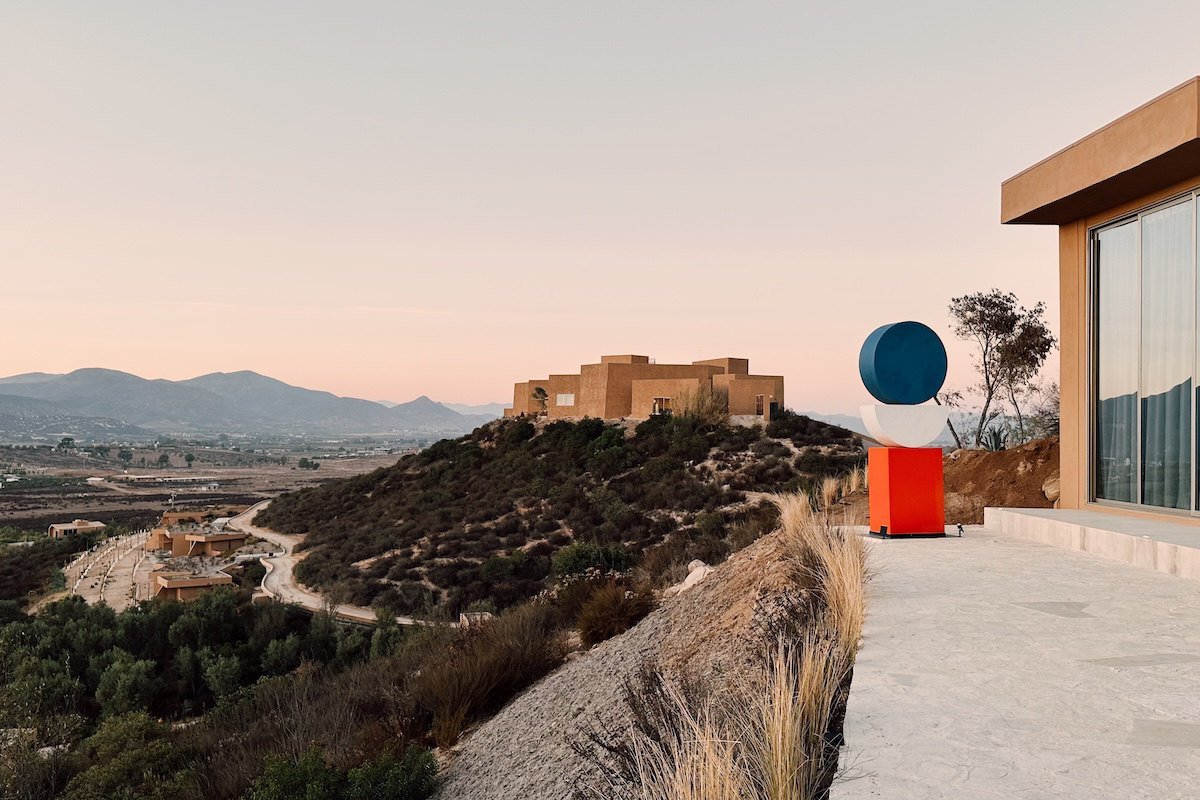


![‘It Looked Like A Crime Scene’: Flight Attendants Shocked By Worst Air France Business Class Passenger Ever [Roundup]](https://leftfieldmagazine.com/wp-content/uploads/2025/07/‘It-Looked-Like-A-Crime-Scene-Flight-Attendants-Shocked-By-280x210.jpg)

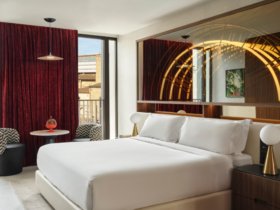
‘فروض منزلية في مادة الرياضيات للسنة الثانية اعدادي’ تشير إلى مفهوم أساسي في التعليم بالمغرب، سواء كان ذلك منصة، خدمة، أو موضوع تعليمي محدد. يتم استعمال هذا المصطلح من طرف التلاميذ أو الأساتذة للوصول إلى موارد دراسية، تتبع النتائج، أو الإعداد للامتحانات. يعكس هذا المصطلح الدور المتزايد للتكنولوجيا والتنظيم في منظومة التعليم المغربية.